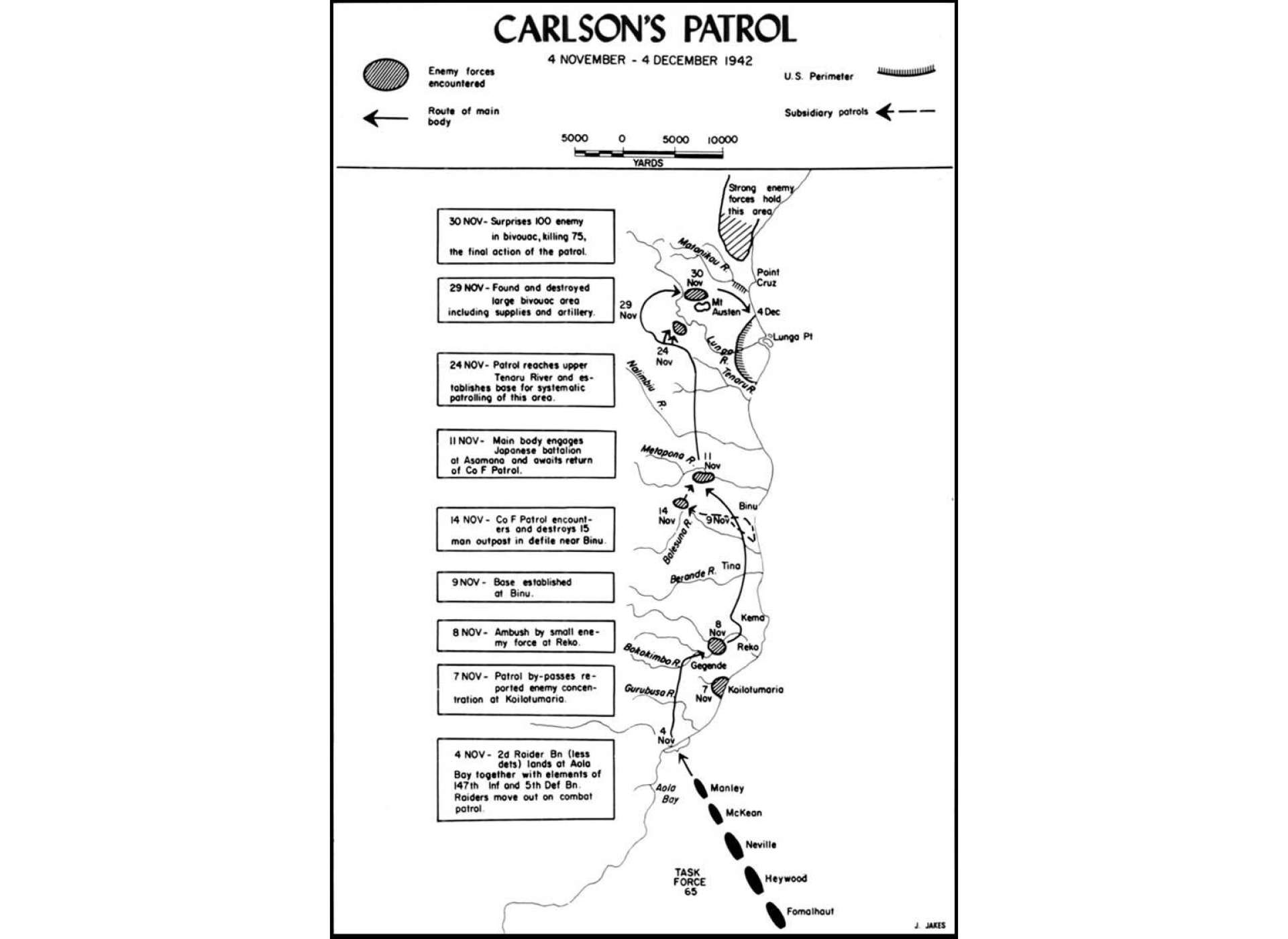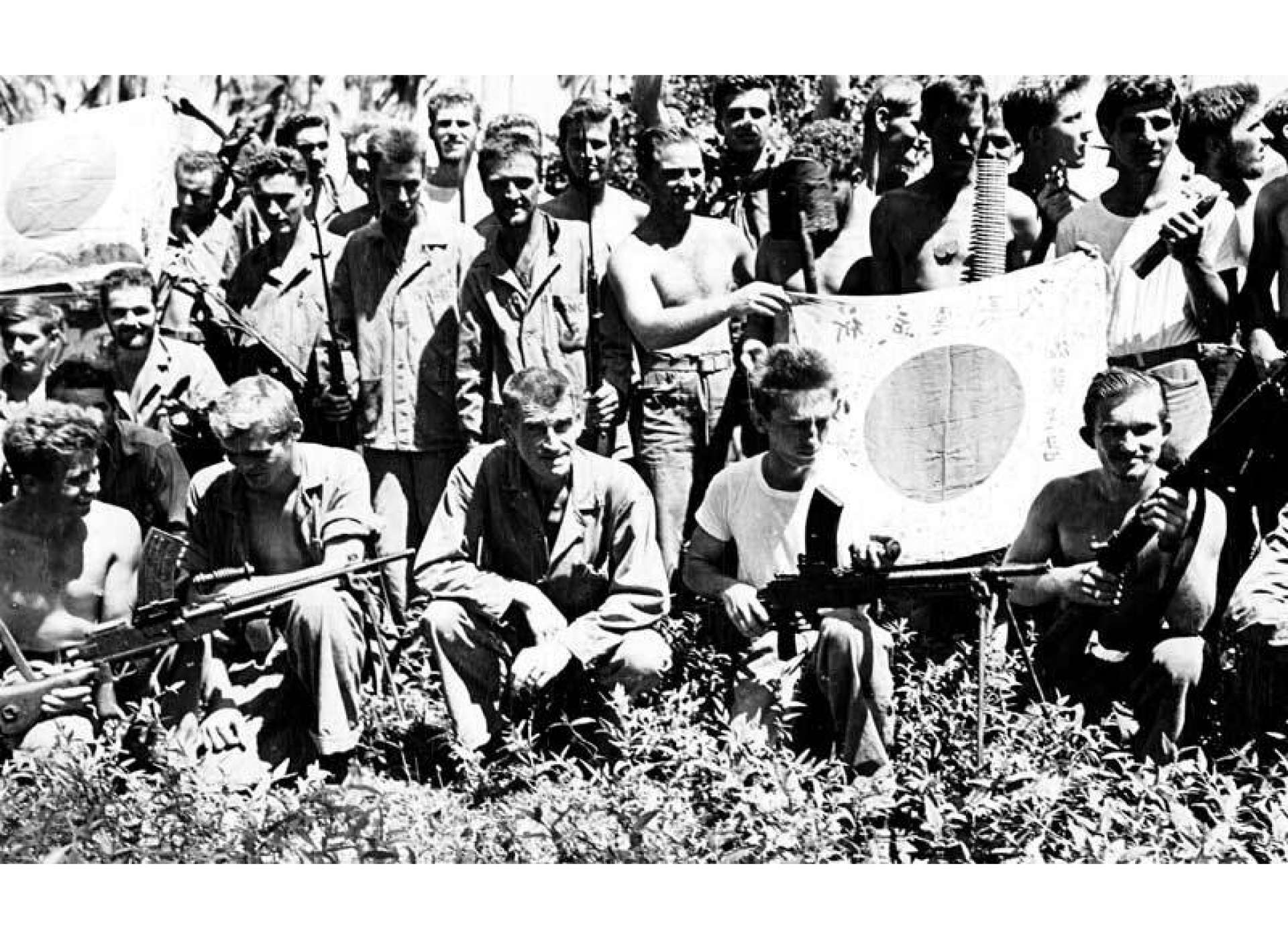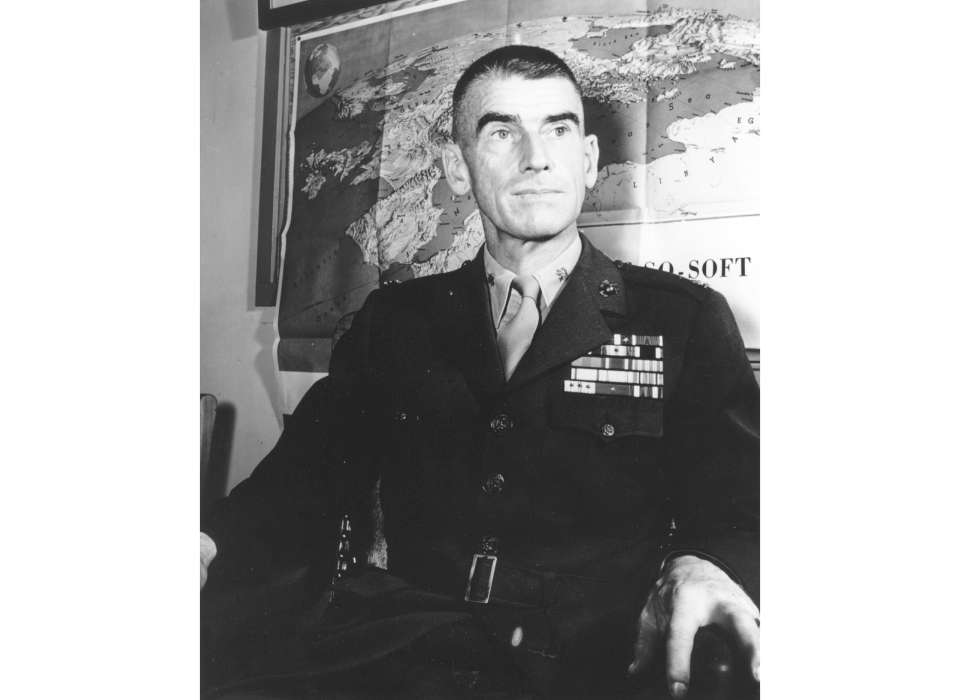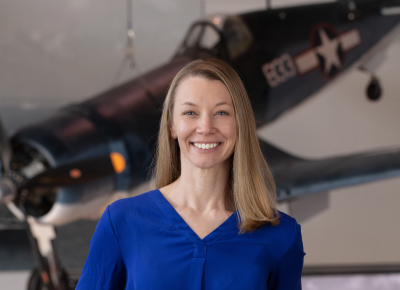Official photo of Brigadier General Evans F. Carlson, courtesy of the United States Marine Corps.
They were gathered from near and were gathered
From far,
They were picked from the best in the land,
A hell-raising crew that sailed the blue,
Was Carlson’s raider band.
On August 28, 1942, the Detroit Times announced that the 2nd Marine Raider Battalion would receive its own official battle song. Newspapers across the country celebrated the battalion, informally called Carlson’s Raiders after the commander Lt. Colonel Evans Fordyce Carlson, for its successful assault against the Japanese on Makin Island in the Pacific. Though Carlson’s Raiders were less victorious in their goal of diverting Japanese reinforcements in key areas in the Pacific, the public touted the battalion’s killing of 160 Japanese soldiers and their victory offered a much-needed morale boost for Americans.
But the true test of the Raiders’ mettle and training would come three months later at Guadalcanal.
The Raiders’ namesake, Carlson, was the driving force in shaping the battalion’s fame and unique culture. Following time in the Army during World War I as a captain and a failed stint as a salesman, Carlson re-enlisted in the military in 1922–this time as a Marine private. Carlson had a relatively uneventful record of service before he left with the 4th Marines for Shanghai in 1927 where he served as an intelligence officer after commissioning again as a second lieutenant.
Later in 1937, Carlson returned to Shanghai as a duty observer and received permission to move with the Chinese Communist Party’s 8th Route Army, led by Mao Tse-Tung,which went on the defensive against the Japanese Army. While traveling with the 8th Route Army, Carlson was impressed by the soldiers’ abilities to break through enemy lines and establish bases among rough and rural terrain and was eager to try his hand with these tactics.

Map of Carlson’s Long Patrol, courtesy of the National Park Service.
Fortunately for Carlson, the Commandant of the Marine Corps needed someone willing to create a new, commando-type unit that could counter Japanese maneuvers in the Pacific. In February of 1942, Carlson received permission to form the Raiders and apply his principle of Gung Ho–or “working in harmony.” Team work based on mutual respect among officers and enlisted men, open discussion of ethical as well as military topics during Friday Night Forums, and superior physical and mental agility as well as character and self-imposed–rather than simply ordered–discipline were key tenets of Carlson’s leadership. Of the 3,000 Marines who volunteered to serve with Carlson, he selected 1,000 to train for intensive guerilla and unconventional operations in the Pacific. Though many Marine officers doubted Carlson’s iconoclastic views, President Franklin D. Roosevelt (whose own son, James Roosevelt, would serve next to Carlson) lent his support to the innovative team.
The Raiders’ first test on Makin Island, though celebrated by the media at home, received mixed results. They had proven themselves effective in battle (killing 83 Japanese soldiers and losing 14 Marines), but ultimately failed to redirect Japanese attention from the Solomon Islands–one of the main goals of the mission. Carlson’s decision to surrender to a Japanese soldier (who was shot by another Marine before delivering the surrender note, forcing every man to fend for himself in getting to safe grounds) also raised suspicions among his fellow officers and even members of his own battalion to operate and think clearly under fire. But the Commandant was not ready to give up on Carlson.
On November 4, 1942, 221 Raiders came ashore on Guadalcanal. Marine Major General Alexander Vandegrift ordered the Raiders on a reconnaissance mission to determine the extent of Japanese forces east of Henderson Field (a Japanese air field taken over by Americans earlier that year) and support Marines at Henderson by stopping any Japanese forces making their way further inland through the dense jungle. When 1500 Japanese soldiers slipped past American forces, the Raiders had a new goal: clearing the enemy from an 18 mile stretch of land–a difficult task with the island’s unforgiving foliage, heat, and mosquitos–to cut the Japanese line of retreat from the coast.

Carlson’s Raiders with their trophies, including Japanese Type 96 machine guns and flags, courtesy of the National WWII Museum.
During Carlson’s Patrol (as the battalion’s trek came to be known), the Raiders hiked more than 150 miles over a span of 29 days, battling concentrations of Japanese troops and confiscating enemy weapons and artillery along the way. But it was the unrelenting climate and unforgiving nature of the jungle terrain that took its toll on the tired and weary Marines. Ringworm, malaria, and other illnesses claimed more men than enemy fire.
Despite the environmental challenges, the Raiders used their guerrilla tactics to engage Japanese units, killing 500 Japanese while losing 16 men, and gather vital intelligence from November 4 to December 4, 1942. Carlson was proud of his battalion and newspapers celebrated their victory at Guadalcanal, but the Raiders were short lived. Marine Corps high command determined that though impressive, special forces were unnecessary in the continuing fight in the Pacific. On March 14, 1943, the 1st Marine Raider Regiment assumed control of the 2nd Marine Raiders, and by February of 1944, the Raider Regiment became a regular Marine Corps infantry unit—the 4th Marines.
Carlson’s tactics, however, continued to be admired by military leaders long after his death in 1947 and the legacy of his Raiders in the Pacific lives on today.
Stephanie Hinnershitz, PhD
Stephanie Hinnershitz is a historian of twentieth century US history with a focus on the Home Front and civil-military relations during World War II.
Cite this article:
MLA Citation:
APA Citation:
Chicago Style Citation:







![Max Fuchs, New York City cantor, sings as Rabbi Sydney [sic] Lefkowitz, Richmond, VA, conducts the first Jewish services from Germany.](/sites/default/files/styles/max_650x650/public/2025-10/image1.jpg)

